https://thecafesucrefarine.com/french-shortbread-cookies-sables-bretons/
- 1 cup very soft butter I use salted butter
- ¼ cup granulated sugar
- ½ cup powdered sugar
- 2 egg yolks
- 1 teaspoon vanilla extract
- 2 cups plus 2 tablespoons all purpose flour more for the counter
- granulated sugar or Vanilla Sugar for sprinkling
- Preheat the oven to 375˚F. (190˚C.) Line two baking sheets with parchment paper. Set aside.
- In a medium size bowl, combine the soft butter and sugars. Stir until smooth and well combined.
- Add the egg yolks and vanilla extract and stir to incorporate. Add the flour and stir just until all of the flour disappears. The mixture will seem crumbly at first. Just keep stirring until it starts to come together.
- Sprinkle a work surface with flour. Have some extra flour on the side in a small cup.
Home » French Shortbread Cookies (Sablés Bretons)
French Shortbread Cookies (Sablés Bretons)
Total Time: 1hourThis post may contain affiliate links. For more information, see our privacy policy.
These crisp, buttery French Shortbread Cookies are crazy delicious. They look and sound quite fancy but, in reality, they're super easy with just one bowl and no mixer needed!
With a trip to France on the horizon, I decided a few weeks ago, that it was the perfect time to add another shortbread recipe to our beloved, ever-expanding collection. Not just any shortbread though, this time it's a French Shortbread recipe with a fancy name, Sablés Bretons.
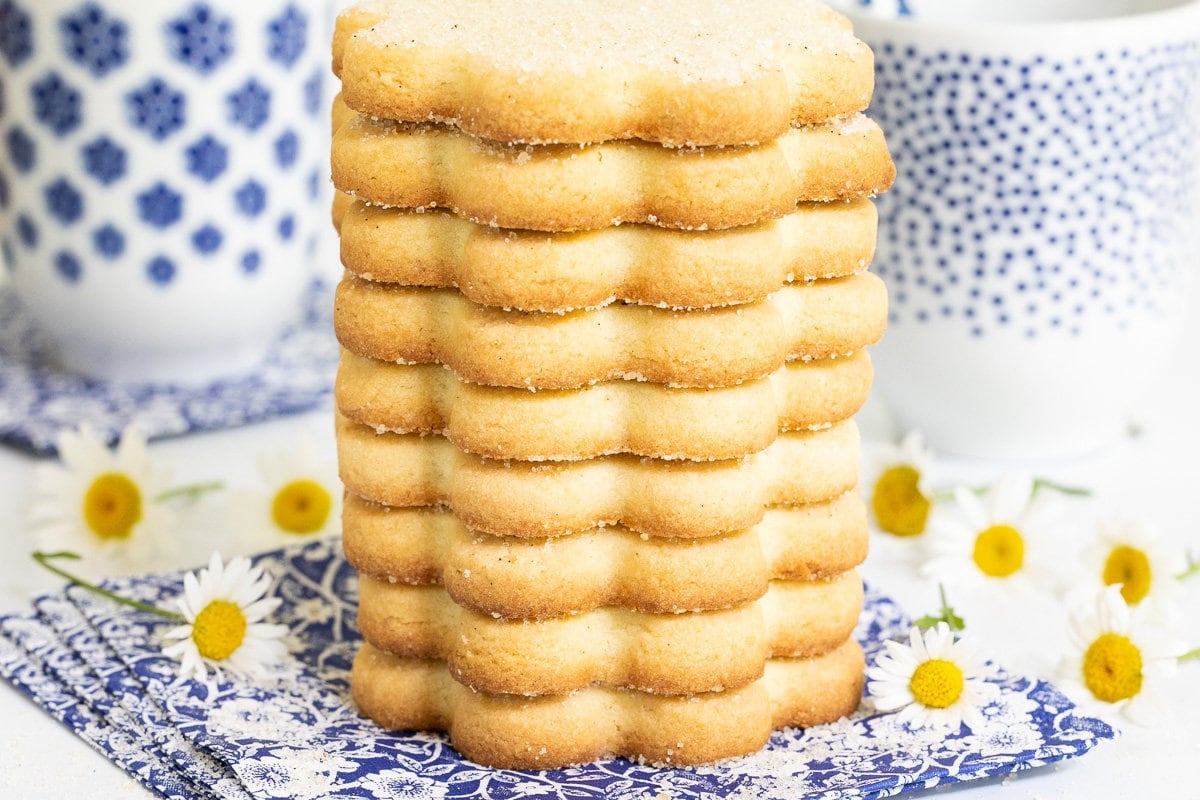
You might be thinking, "Wait a minute! Shortbread hails from Scotland or England or Ireland, NOT France!". And you're right. But not completely. Let me explain...
The history/origin of shortbread dates back to Scotland in the 12th century, although it was quite different at the time, a twice-baked, hard bread without much sweetness. Later, under the rule of Scotish Queen Mary things changed and shortbread evolved into a sweet, buttery treat, similar to what we know and love today.
These days its claim to fame and ownership is a bit of a toss up, and if you travel just about anywhere in the UK or the Republic of Ireland shortbread is touted to be a classic and national treasure.
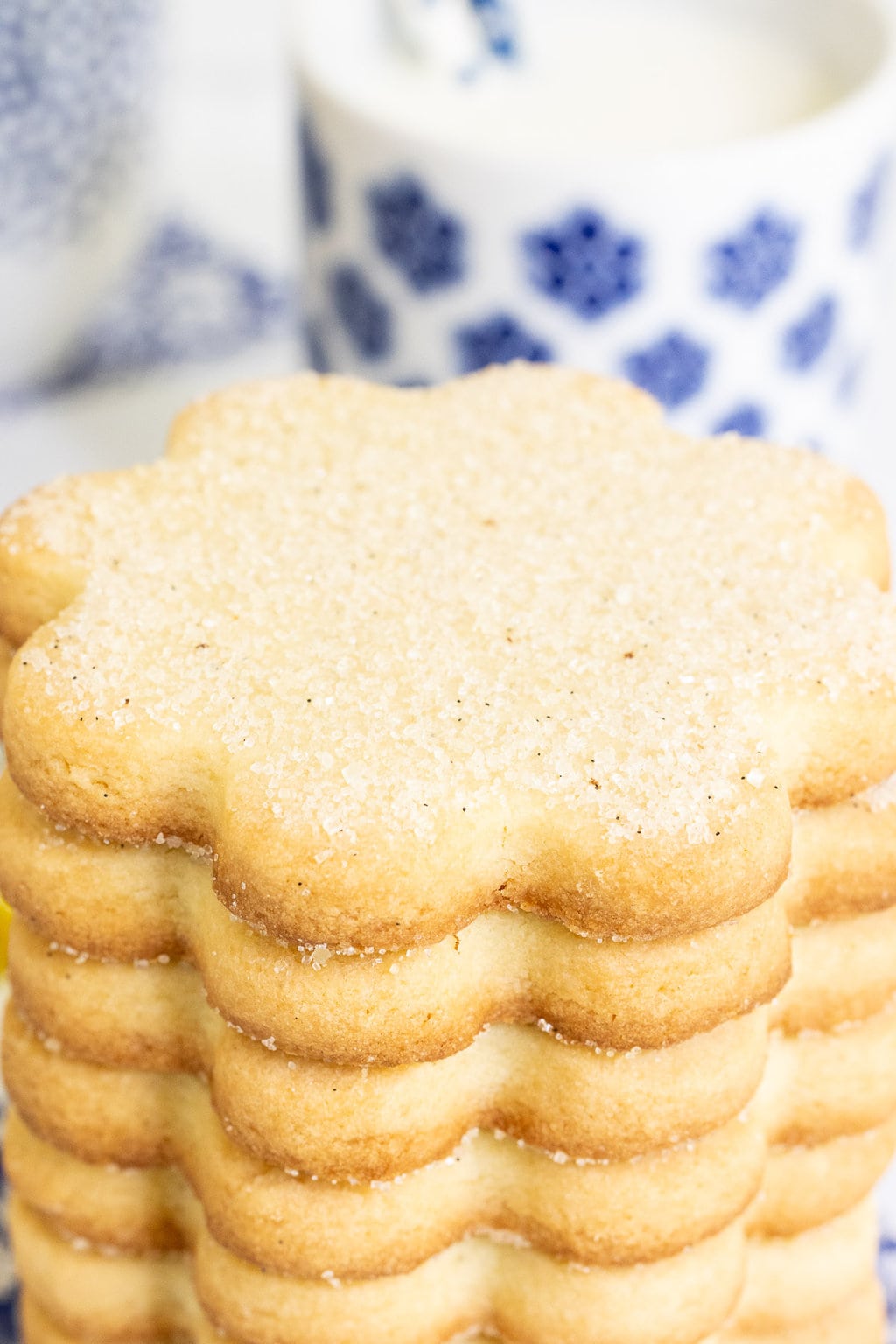
So why do I call these cookies French Shortbread? Well, if you look up "shortbread" in the MerriamWebster dictionary, this is what you'll see:
Shortbread is a thick cookie made of flour, sugar, and a large amount of shortening.Also, in the culinary world, shortbread is simply a sweet dough that's made without leavening. You'll find shortbread cookies, shortbread crusts, shortbread tarts, shortbread bars and on and on it goes. So you see, it's okay to call these sweet treats, French Shortbread Cookies!Plus, in French they're know as Sablés Bretons, sable meaning "sandy" in French and Breton refering to Brittany, the region of France where these cookies originated. Sablés Bretons are among the most beloved of French cookies, available at patisseries and markets all over France.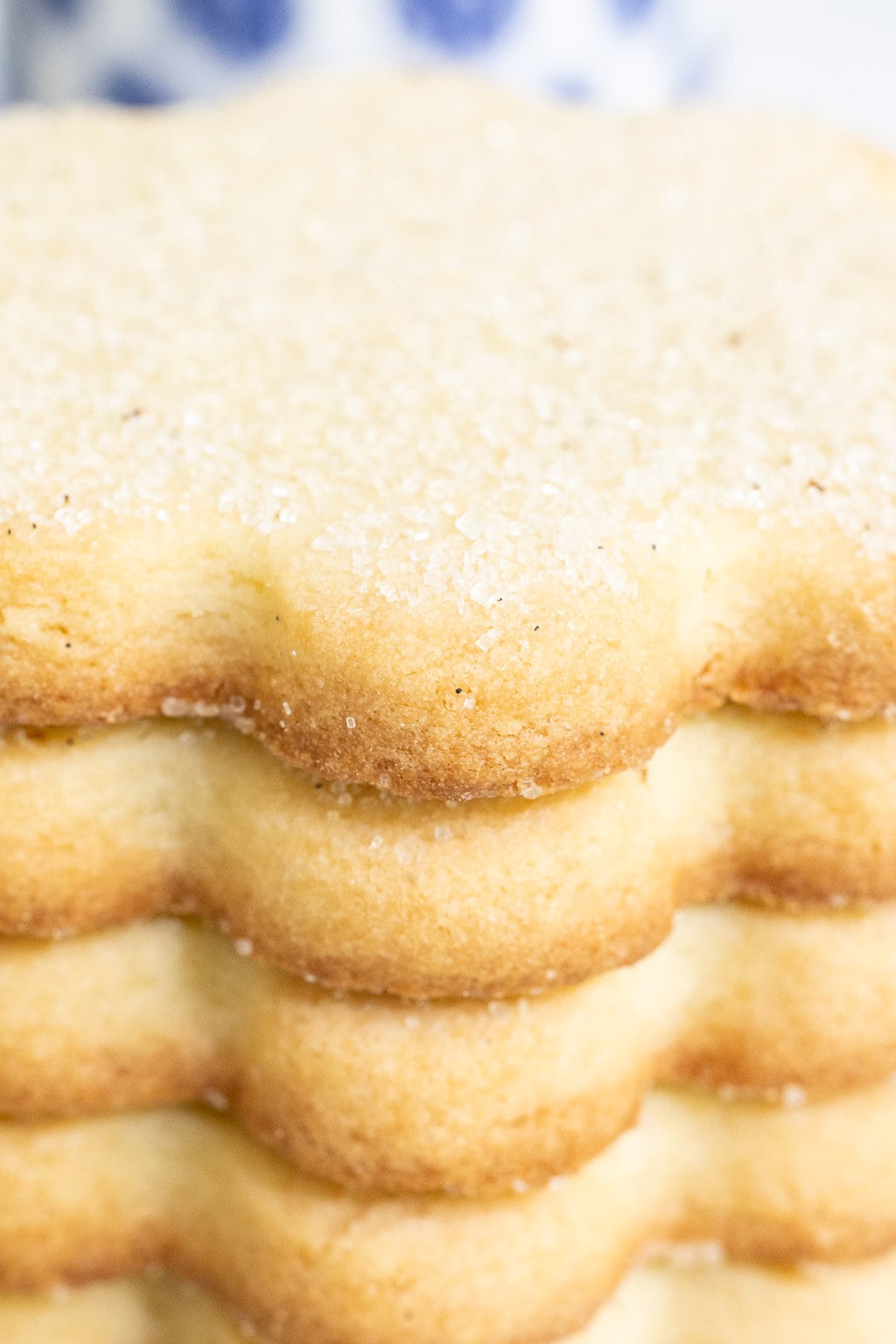
How is French shortbread different?
Although there are a lot of similarities between these French Shortbread Cookies and classic Scotish shortbread, there is one distinct ingredient that makes them unique. Eggs! Classic Scotish or Irish shorbread has a super short list of ingredients. Butter, flour and sugar. Maybe a little salt and/or vanilla but that's it.
French shortbread includes either an egg or a few egg yolks. The recipe I'm sharing today incorporates two yolks. The yolks add a little tender richness to the cookies, although the taste and texture of these cookies is similar to the Scotish renditions.
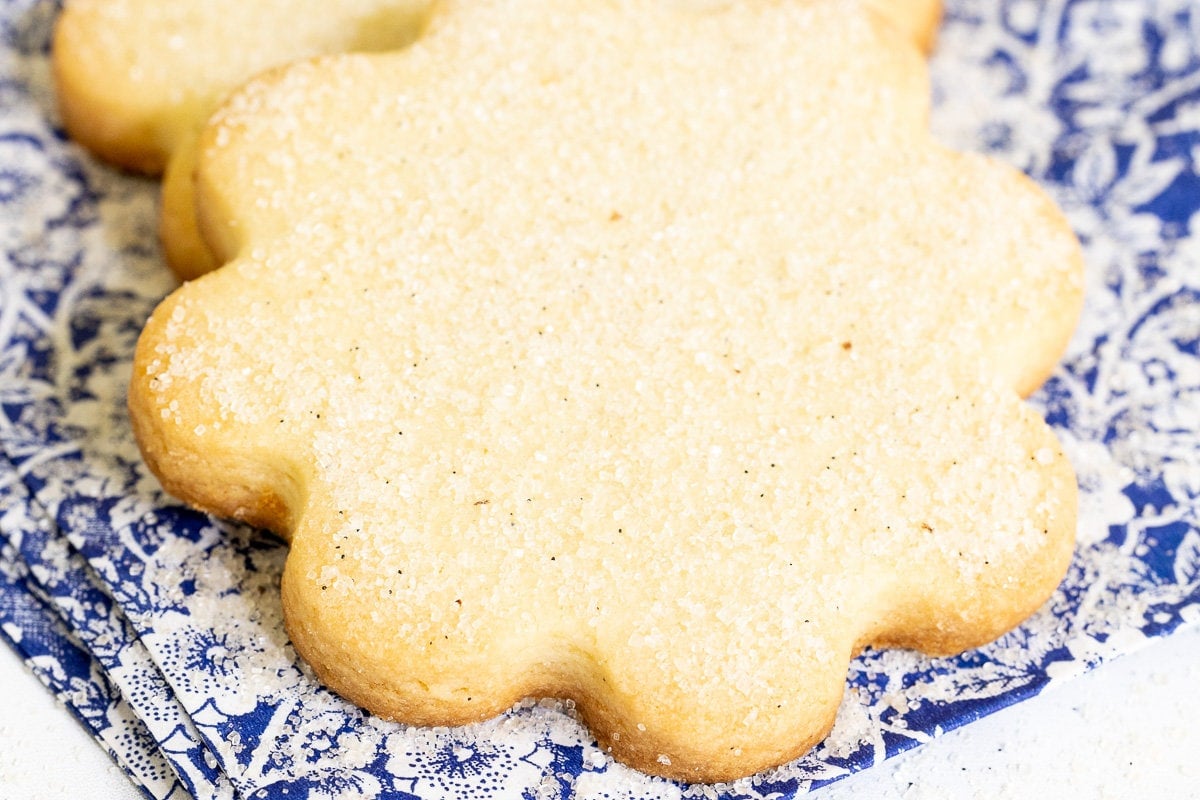
A special topping
These French Shortbread Cookies get a little sprinkle of sugar before and after they're baked. The sugar gives the cookies a pretty presentation and a lovely little crunch. You have serveral options regarding the sugar topping; regular granulated sugar, cane sugar (not quite as fine) or Sucre Vanillé (Vanilla Sugar).
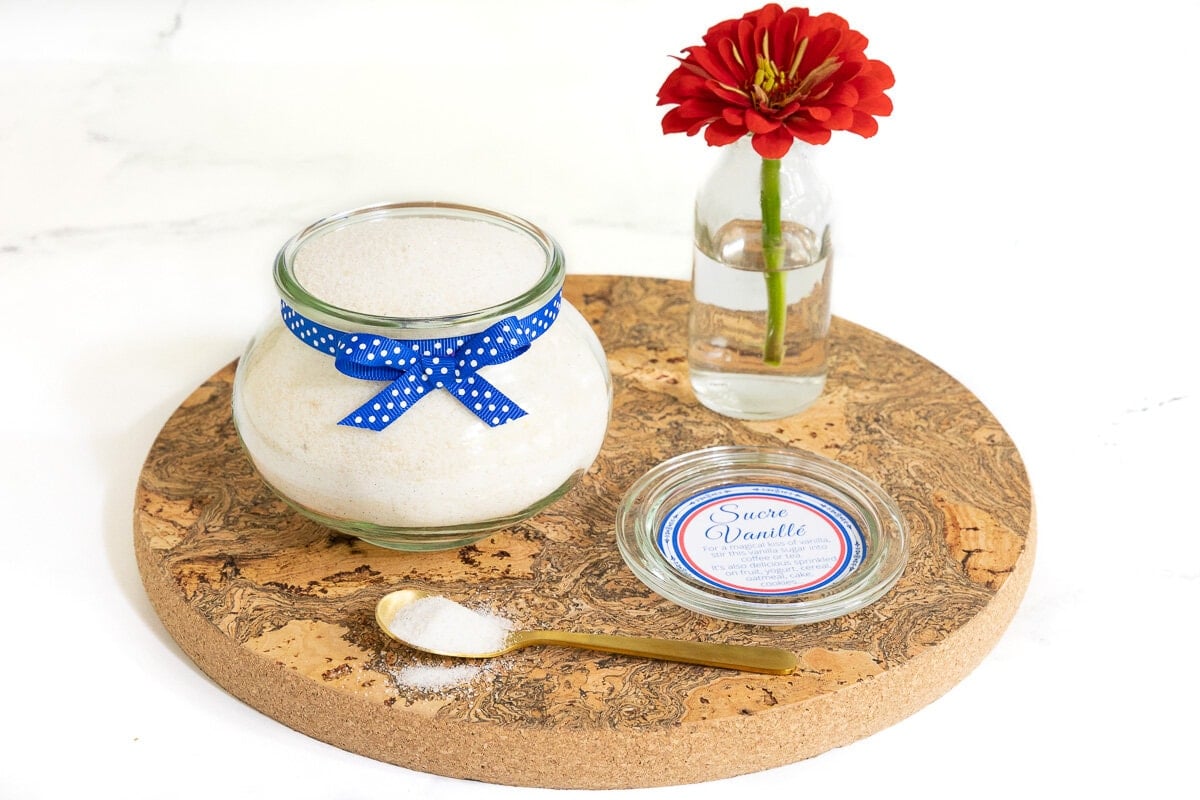
Any of these sugars will work, but if you have a few extra minutes, make a batch of the Sucre Vanillé - it's the crème de la crème, for sure!
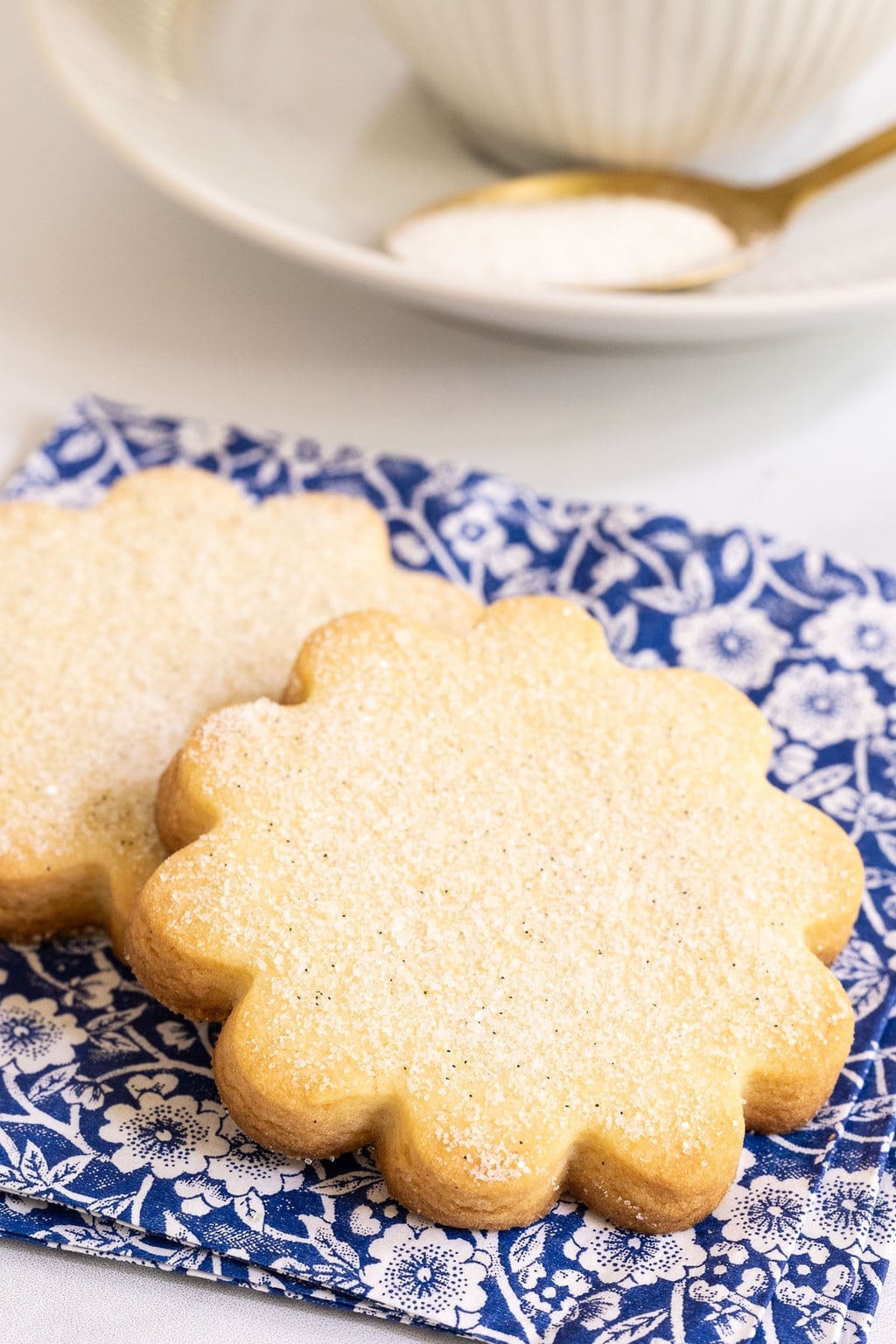
Great to stash away!
If you've got a good hiding place (I never have one for long), these French Shortbread Cookies are a wonderful treat to have stashed away as they make a delicious quick dessert in a hurry. Pair them with a bowl of good ice cream drizzled with this Ridiculously Easy Butterscotch Sauce or this Raspberry Coulis and you've got a dessert that's worthy of royalty!
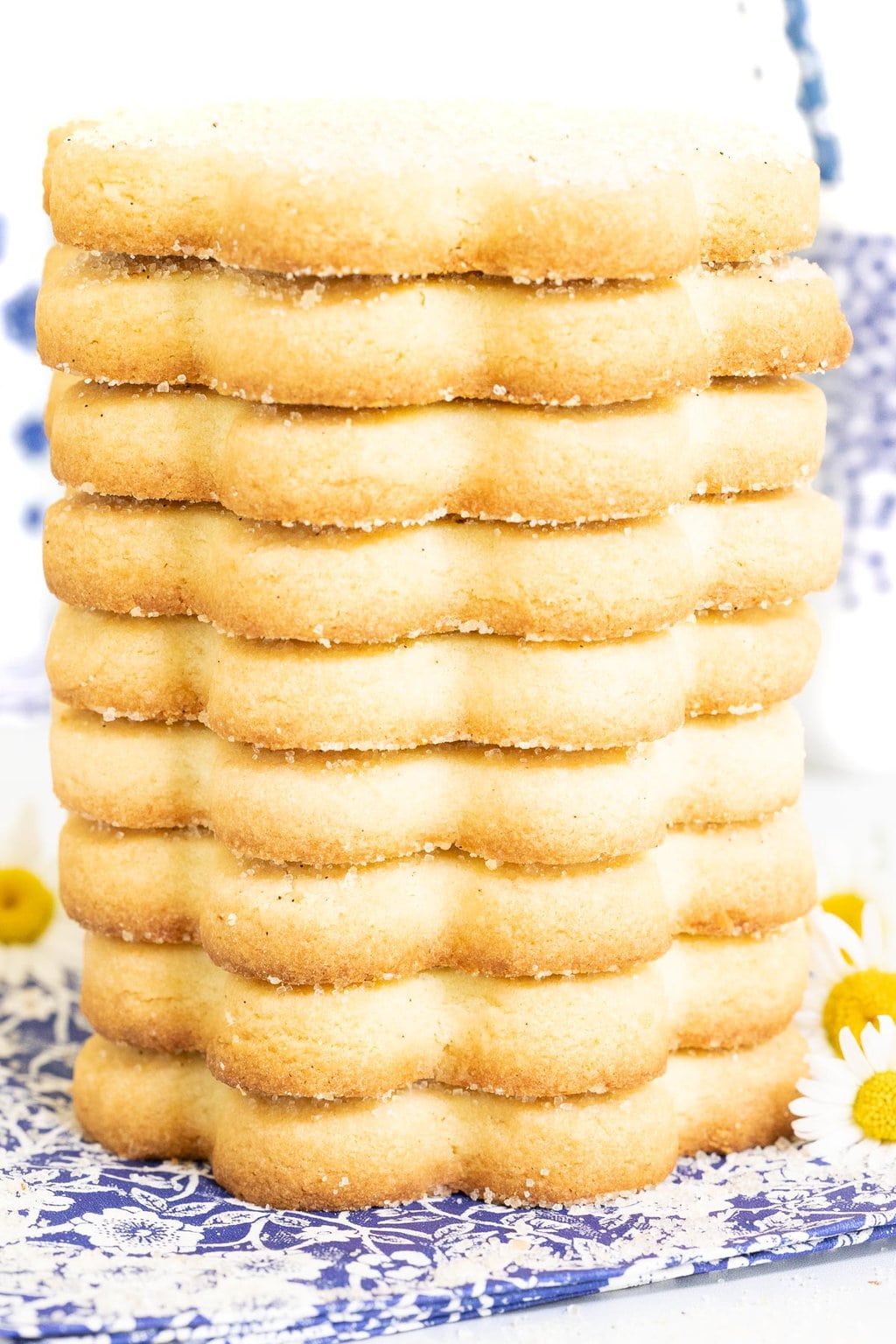
Great to give away!
They also make a really fun gift in a cellophane bag or in a box tied with a pretty ribbon. We're offering some free, printable labels to adorn your gifts.
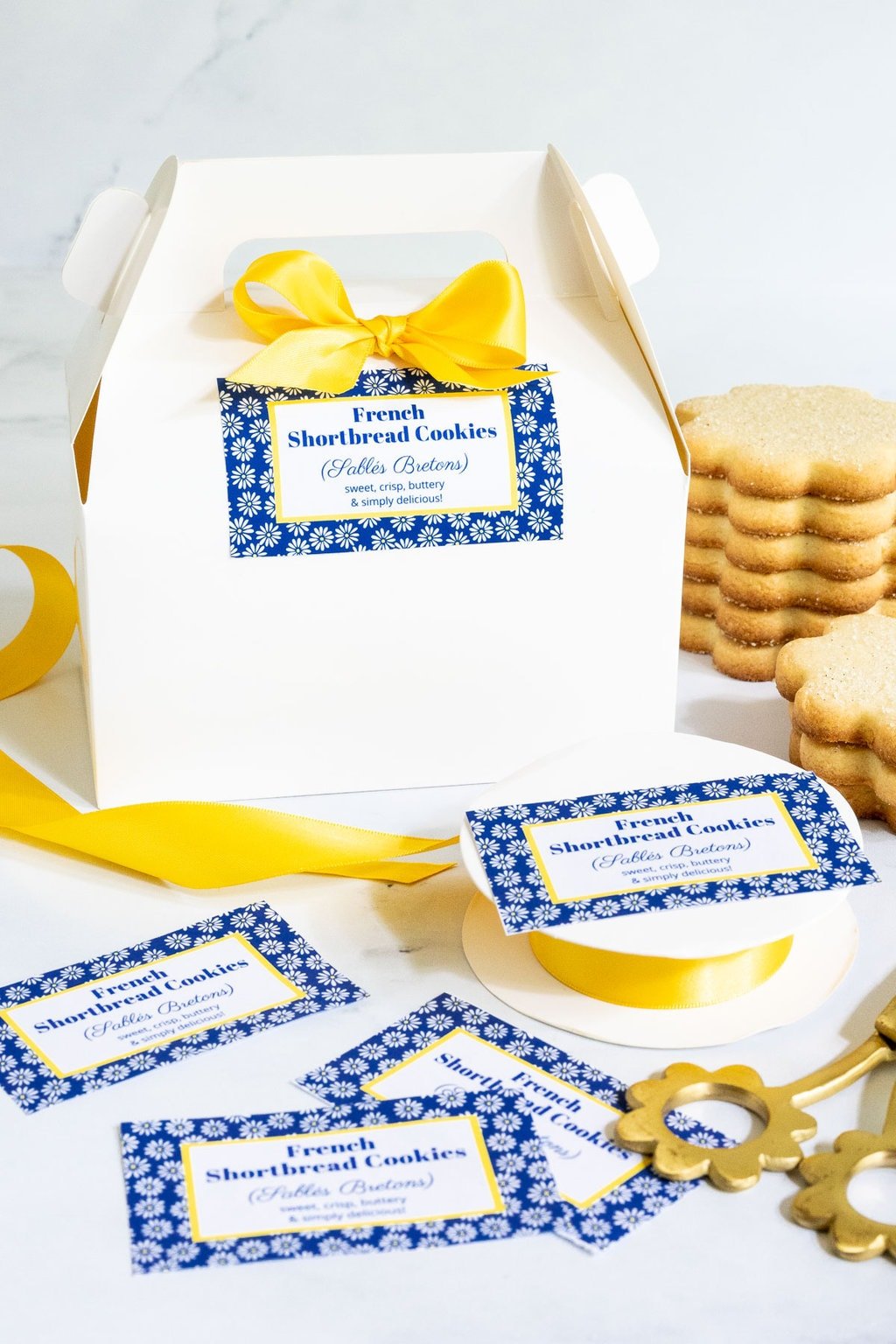
To receive a PDF for the labels and instructions on how to print them, just let us know, in the comment secction below, that you'd like these sent. We'll email them to you along with links for the boxes and ribbon pictured in this post.
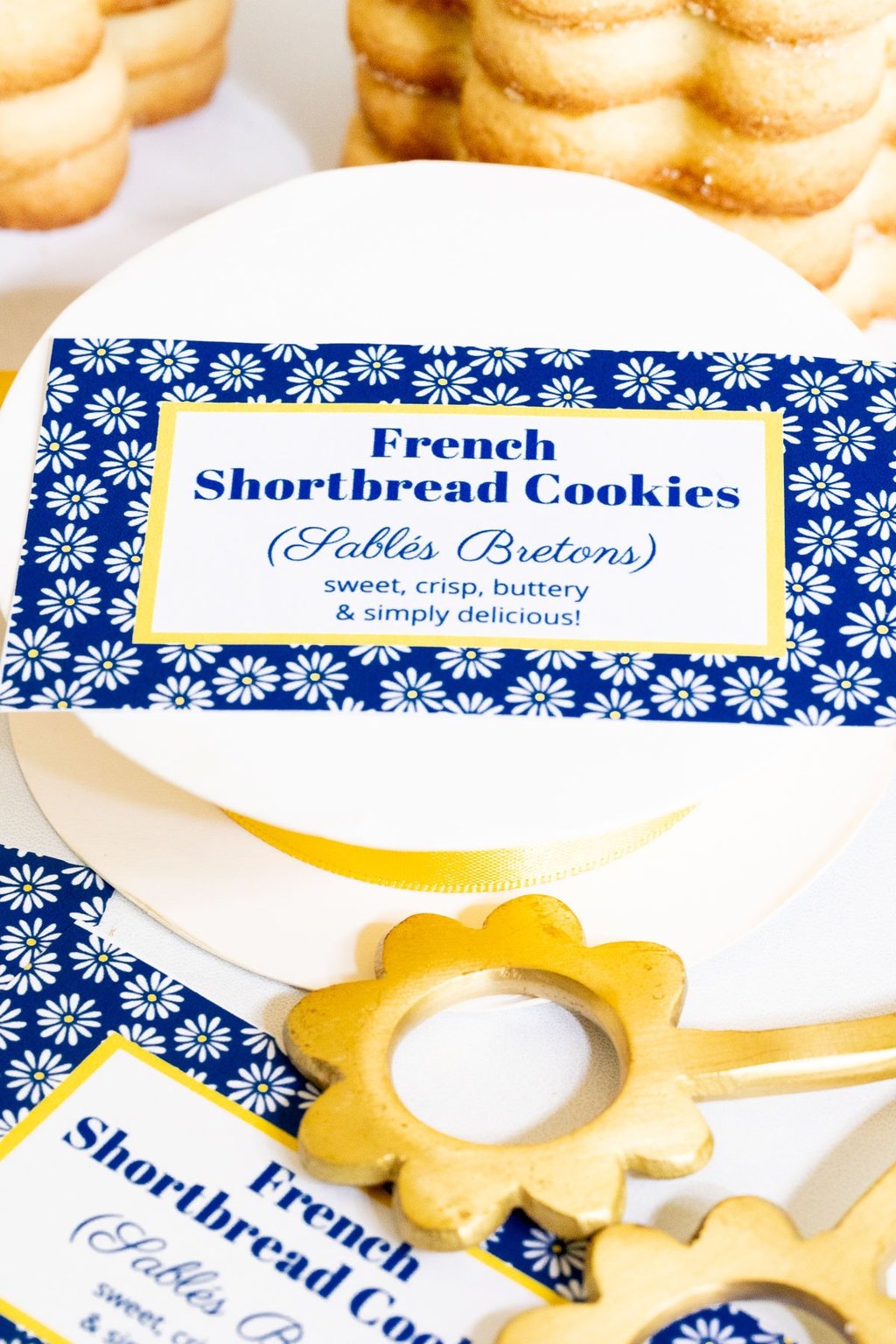 Make a batch of these Sablés Bretons and pretend you're in France. They're perfect with a tall glass of cold milk, a tasse de café (coffee) or a cappuccino! Bon Appétit!5 from 6 votesPrintFrench Shortbread Cookies (Sablés Bretons)
Make a batch of these Sablés Bretons and pretend you're in France. They're perfect with a tall glass of cold milk, a tasse de café (coffee) or a cappuccino! Bon Appétit!5 from 6 votesPrintFrench Shortbread Cookies (Sablés Bretons)These crisp, buttery French Shortbread Cookies (Sablés Bretons) are crazy delicious. They look and sound quite fancy but, in reality, they're super easy with just one bowl and no mixer needed!
Author: Chris Scheuer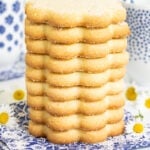 Course: Baked Goods, Dessert/CookiesCuisine: FrenchKeyword: French Shortbread Cookies, Sablés BretonsPrep Time: 30 minsCook Time: 30 minsTotal Time: 1 hrServings: 20Calories: 155 kcalIngredients
Course: Baked Goods, Dessert/CookiesCuisine: FrenchKeyword: French Shortbread Cookies, Sablés BretonsPrep Time: 30 minsCook Time: 30 minsTotal Time: 1 hrServings: 20Calories: 155 kcalIngredients- 1 cup very soft butter I use salted butter
- ¼ cup granulated sugar
- ½ cup powdered sugar
- 2 egg yolks
- 1 teaspoon vanilla extract
- 2 cups plus 2 tablespoons all purpose flour more for the counter
- granulated sugar or Vanilla Sugar for sprinkling
Instructions- Preheat the oven to 375˚F. (190˚C.) Line two baking sheets with parchment paper. Set aside.
- In a medium size bowl, combine the soft butter and sugars. Stir until smooth and well combined.
- Add the egg yolks and vanilla extract and stir to incorporate. Add the flour and stir just until all of the flour disappears. The mixture will seem crumbly at first. Just keep stirring until it starts to come together.
- Sprinkle a work surface with flour. Have some extra flour on the side in a small cup.
- Turn the dough over several times to coat lightly with the flour then divide the dough in two and cover one half with a piece of plastic wrap.
Keeping the surface and your rolling pin lightly dusted with flour at all times, roll out the dough to the desired thickness. I like mine about a ¼ inch thick for thinner cookies and closer to ⅜ for thicker ones like in this post. You can go thinner or thicker it’s just important to keep the surface underneath the dough lightly floured as you roll. (I also like to dip my cookie cutter in flour before cutting each cookie to keep the dough from sticking to the cutter.)
- Use a cutter of your choice (I used a scalloped 3-inch cutter) to cut out the cookies, transferring them to one of the prepared sheet pans as you go. Space the cookies 2 inches apart.
Bring the dough scraps together, then roll out more cookies until the dough is used up. Repeat with second ball of dough. Sprinkle the cookies lightly with granulated sugar, cane sugar or Vanilla Sugar. Chill the cookies in the refrigerator for 15-30 minutes before baking.
Bake the cookies for 12-14 minutes or until light golden brown. If the cookies have puffed a bit or have some little bubbles, you can flatten them at this point with the back of a flat metal spatula. Sprinkle lightly with a bit more sugar. Transfer the cookies to a wire cooling rack to cool completely

No comments:
Post a Comment